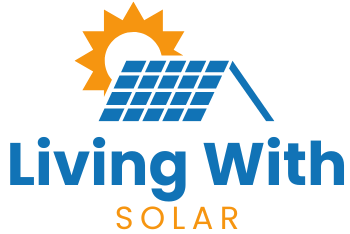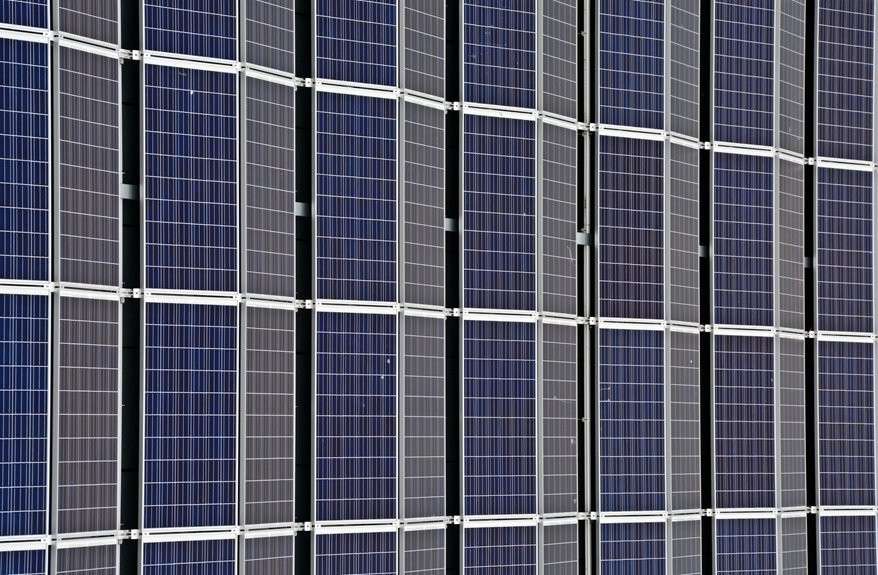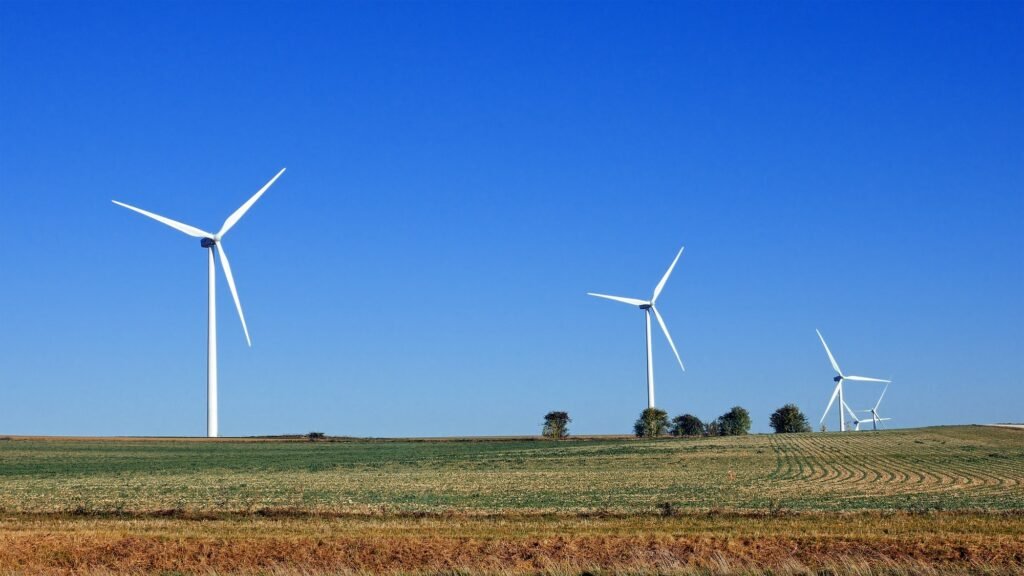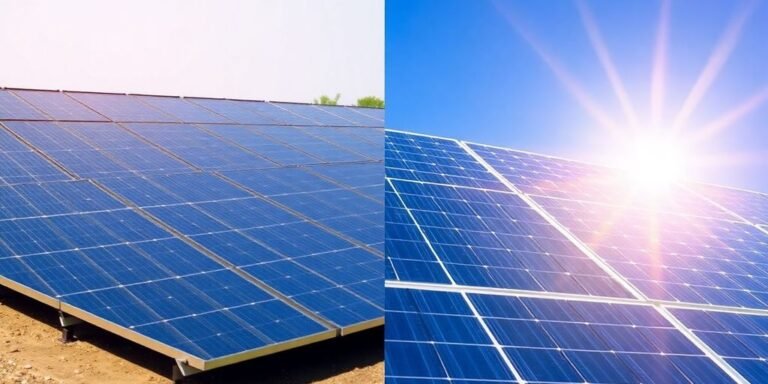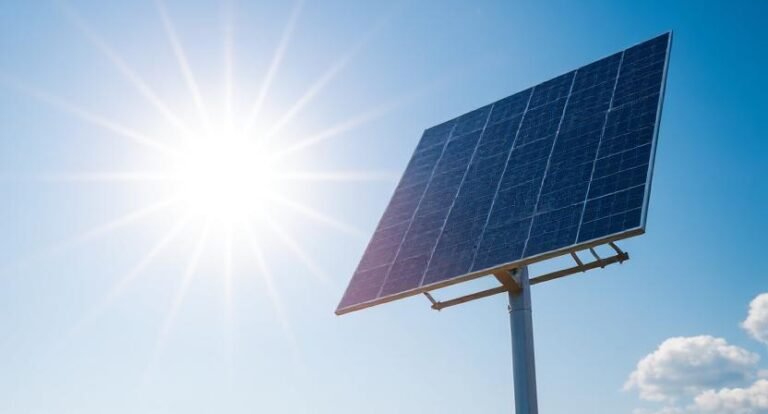When troubleshooting common solar panel problems, I start with a visual inspection for damage or dirt. Next, I check for shading from nearby objects and make sure to clean the panels regularly. I monitor performance with system alerts, focusing on electrical connections for any loose wires or corrosion issues. I also keep an eye on the inverter and voltage levels. If challenges persist, I know there's more information to explore for resolving these issues.
Visual Inspection of Solar Panels
When evaluating the health of your solar panels, a visual inspection is essential. I always start by checking for any physical damage like cracks, warping, or delamination, as these can really affect energy output. It's also vital to look for dirt or debris accumulating on the surface; even a little buildup can reduce sunlight absorption. Don't forget to inspect the mounting hardware and verify there are no loose connections that might compromise performance. Finally, I check the combiner box and wiring for signs of corrosion. Addressing these issues early can prevent more significant problems down the line.
Checking for Shading and Obstructions
After ensuring your solar panels are free from physical damage and debris, the next step involves checking for shading and obstructions that could hinder their performance. Even partial shading can greatly reduce energy production, so I recommend inspecting surrounding vegetation, buildings, or other structures that might cast shadows, especially between 10 AM and 3 PM. Using a solar pathfinder or shading analysis tool can help assess potential shading issues throughout the seasons. Regularly monitoring your solar panels' performance can also pinpoint drops in output, signaling possible shading concerns that need addressing to maintain efficiency.
Cleaning Solar Panels for Optimal Performance
To guarantee your solar panels operate at their best, regular cleaning is essential since accumulated dirt and debris can greatly reduce energy absorption. I've found that cleaning them at least twice a year works well, but if you live in a dusty area, more frequent cleaning might be necessary. It's best to do this in the early morning or late afternoon to avoid thermal shock. Using a soft brush or sponge with gentle soap and water makes sure I don't scratch the surface. After cleaning, I monitor the energy output to see the impact on performance—it's always encouraging to witness the difference!
Utilizing Monitoring Systems to Detect Issues
How can I guarantee my solar panels are functioning at their best? Utilizing monitoring systems is key. These systems continuously track performance metrics like voltage, current, and energy production, helping me spot any anomalies in real-time. By setting up alerts, I'm promptly informed of any deviations, allowing for quick responses to potential issues. The data visualization features help me understand trends and identify recurring problems, guiding proactive maintenance. Additionally, historical performance data provides insights for future troubleshooting efforts. With remote monitoring, technicians can diagnose issues without being on-site, reducing downtime and boosting reliability.
Inspecting Electrical Connections
While I might not think about it often, inspecting electrical connections is essential for guaranteeing my solar panels operate efficiently. I make it a point to check for loose connections, as they can lead to significant energy losses. I also look for any signs of corrosion on terminals, which could cause overheating or system failure. Using a multimeter, I test the continuity of wires to guarantee there are no breaks affecting performance. Regularly checking fuses and breakers helps me identify any blown fuses that might interrupt power flow. Taking these steps guarantees I can effectively check the output of my solar system.
Reviewing System Logs for Error Messages
What could a simple review of system logs reveal about the health of my solar panels? A lot, actually! These logs provide valuable insights into my solar system's operational status and performance history. By checking for error messages, I can pinpoint specific issues like inverter faults or communication errors that need urgent attention. Regularly reviewing system logs helps me identify patterns that might indicate potential failures, allowing for proactive maintenance. Plus, the data points, such as voltage levels and temperature readings, are vital for diagnosing performance issues and ensuring my system runs efficiently. It's a significant step in troubleshooting!
Identifying Common Voltage Problems
After reviewing system logs for error messages, I found it important to understand common voltage problems that can affect my solar panels' performance. Here are a few issues to examine:
- Dirty panels: Dust or debris can lead to low voltage by blocking sunlight.
- Shading: Nearby trees or structures might create shadows, reducing output.
- Microcracks or delamination: Regular inspections can reveal defects affecting voltage.
- Faulty charge controllers: These can limit energy generation, resulting in low voltage readings.
Troubleshooting Inverter Issues
How can I effectively troubleshoot inverter issues to guarantee peak performance? First, I record the DC input voltage and current levels, then measure the AC output voltage to verify it meets specifications. I always monitor the inverter's display for any error messages or warning indicators. If I notice blown fuses or tripped breakers, I address those immediately. I also check that the current demand on the inverter's AC side stays within rated limits to prevent overheating. If the inverter shuts down due to voltage issues, I contact the utility provider to investigate any potential grid supply problems affecting performance.
Addressing Electrical Problems in Solar Systems
Inverter issues often lead to electrical problems within solar systems, making it vital to address these concerns promptly. Here's how I usually tackle it:
- Check for tripped circuit breakers or blown fuses.
- Inspect all wiring and connections for faults or looseness.
- Measure voltage at load connections and combiner boxes to verify proper levels.
- Regularly look for ground faults and broken wires, as these can severely impact energy output.
When to Seek Professional Help for Repairs
When dealing with solar panel issues, it's sometimes best to recognize when a problem exceeds our DIY capabilities. If I encounter persistent electrical issues, like blown fuses, I know it's time to seek professional assistance. For complex problems such as microcracks or reduced energy output without a clear cause, an expert's evaluation is crucial.
| Signs You Need Help | Why It Matters |
|---|---|
| Blown fuses or tripped breakers | Prevent potential hazards |
| Inverter nearing end of life | Guarantee system reliability |
| Consistent performance drops | Diagnose underlying issues |
| Roof damage from installation | Protect structural integrity |
Frequently Asked Questions
How Do You Diagnose Solar Panel Problems?
When it comes to diagnosing solar panel problems, I've learned that a stitch in time saves nine. I always start with visual inspections, checking for debris, shading, and ensuring connections are secure. It's essential!
What Is a Common Defect on a Solar Panel?
I've noticed that microcracks are a common defect on solar panels. They're often hard to spot, but they can seriously impact efficiency. Keeping an eye out for any signs of damage is essential.
How to Check if Solar Panels Are Working Properly?
To check if my solar panels are working properly, I measure the voltage and current, inspect for damage, guarantee they're clean, and monitor performance data. Regular checks help me maintain efficiency and prevent issues.
What Is the Most Common Fault Ground on a Solar System?
Did you know that about 70% of solar system faults stem from ground issues? From my experience, the most common ground fault occurs due to insulation failure, often caused by moisture or damaged wiring. Regular inspections are essential.
